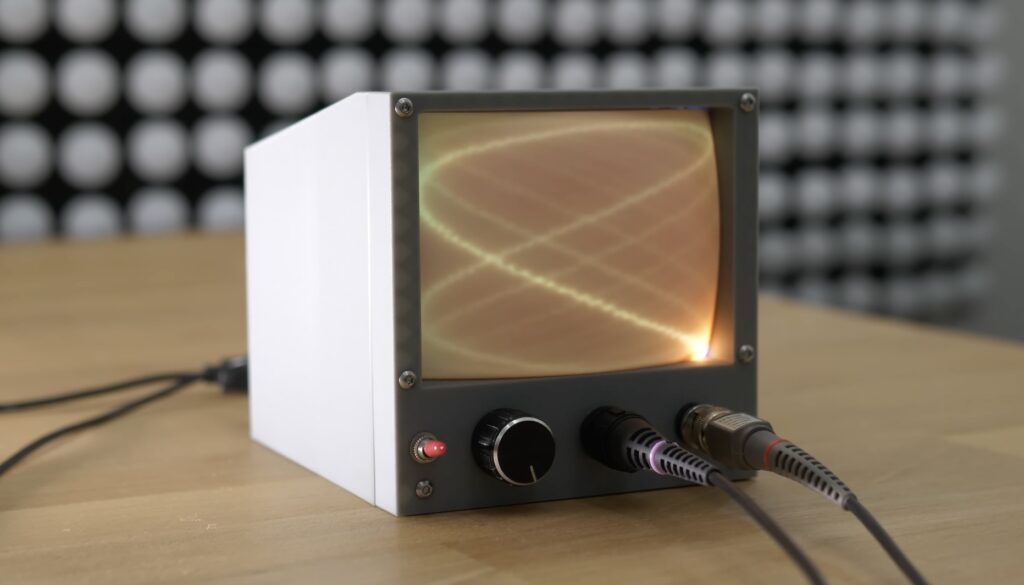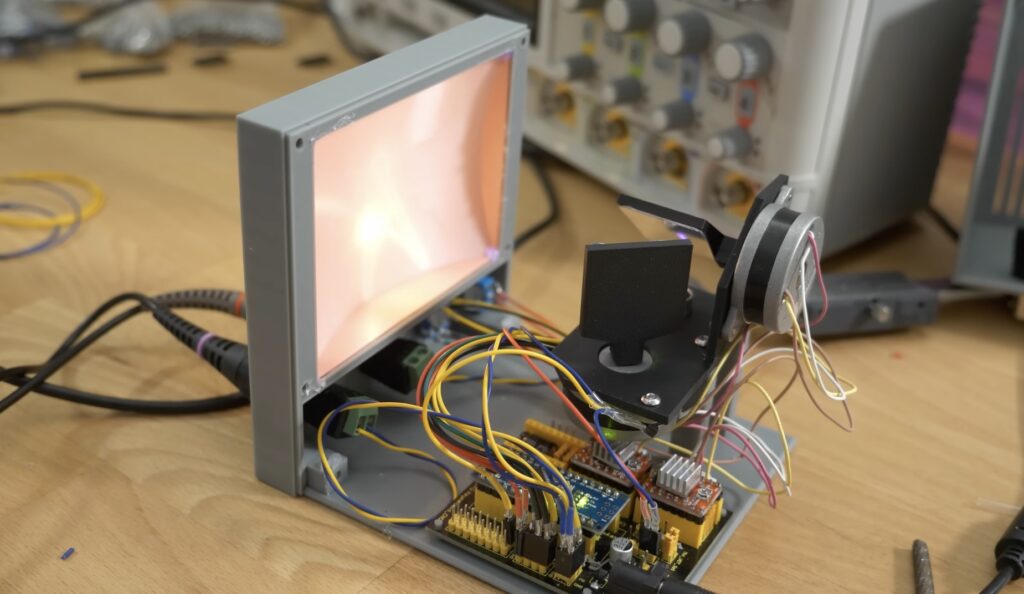
Until the 21st century, cathode-ray tube (CRT) TVs were pretty much the only option. As such, media was made to suit them. Retro video game consoles in particular look best on CRT TVs. But those old TVs are getting hard to find and desirable models are now quite expensive. So, bitluni built his own “fake CRT TV” that works using lasers and UV magic.
Conventional CRT TVs work by shining an electron beam onto a phosphorescent screen, which glows for a moment after being excited by the electrons. Electromagnetic coils deflect that beam so it can scan across the X and Y axes of the screen. Add some clever modulation and you’ve got moving pictures.
The fake CRT made by bitluni works in a similar manner, except it has a 405nm laser pointer instead of an electron beam, stepper motors instead of deflection coils, and a screen printed in special UV-reactive filament instead of a phosphorescent screen. The two stepper motors move mirrors to direct the laser and an Arduino Nano board controls those through a CNC shield.

However, that system is far slower than that of a real CRT, so bitluni had to operate it a bit differently. CRT TVs normally make raster images by scanning across the entire screen, row by row, until the beam reaches the bottom and the process repeats. The fake CRT TV works displays vector graphics instead. That means that it moves the laser to trace the lines of the shapes to display, which is the same way that old tube oscilloscopes worked.
But that is still pretty slow, so bitluni can’t display anything particularly complex or fast-moving. Still, it looks great in the 3D-printed retro-style enclosure. It isn’t suited to playing Super Mario Bros., but it is a nice decorative piece.
The post This fake CRT TV works using lasers and UV magic appeared first on Arduino Blog.
Website: LINK


